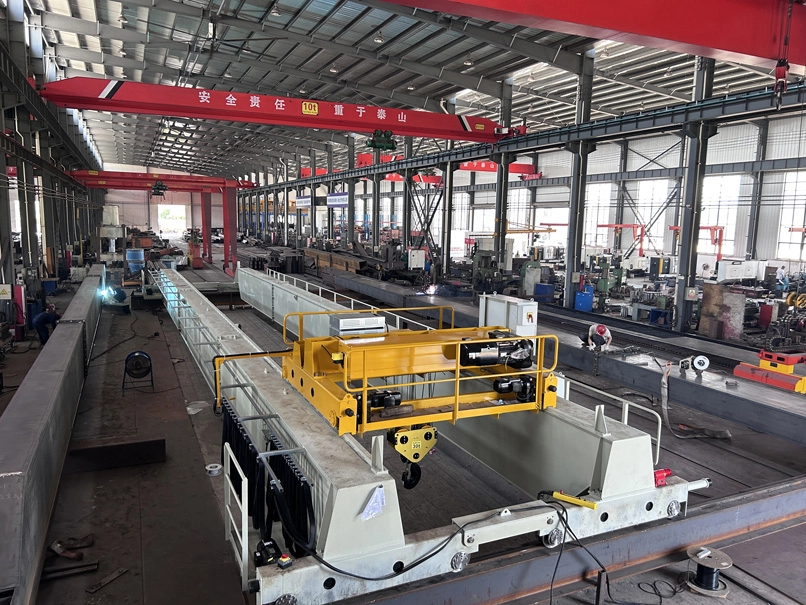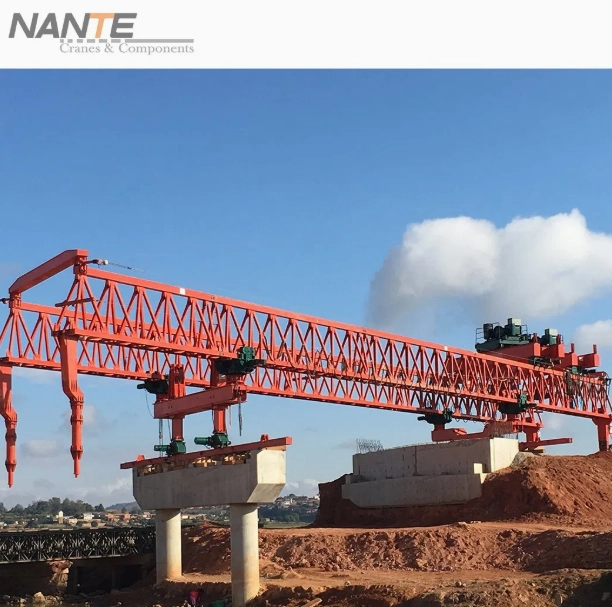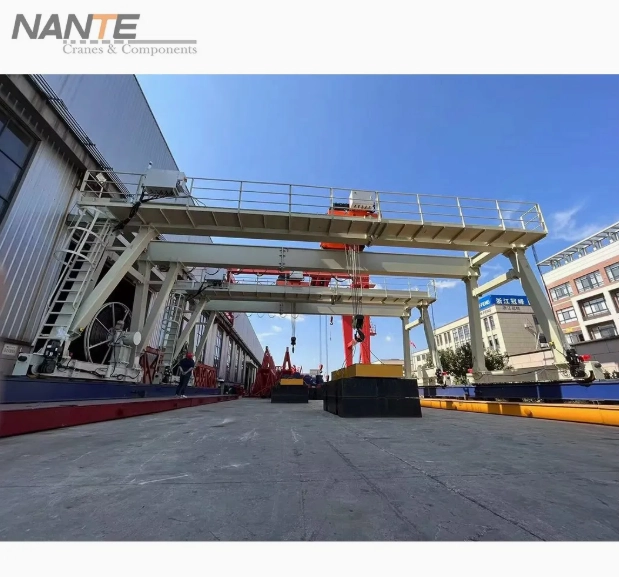How Poor Maintenance Planning Destroys Crane ROI
How Poor Maintenance Planning Destroys Crane ROI
Date: 2025-06-20 Share:
The return on cranes investment, or ROI, depends on factors like purchase price, operating costs, maintenance expenses, downtime, and resale value. Poor maintenance planning can ruin ROI by causing breakdowns, costly repairs, and safety issues. On the other hand, high-quality cranes with proper maintenance can save money and boost profits.
The Financial and Operational Impacts of Poor Maintenance Planning
Increased Downtime and Productivity Losses
When cranes aren’t maintained regularly, they can break down unexpectedly. This halts work and causes downtime. For example, a factory once faced weeks of delays. Worn pulleys led to pump failures. Likewise, a crane with neglected hoist chains or hydraulic systems can stop a construction site. Progress grinds to a halt. Downtime results in idle workers and missed deadlines. It can also lead to penalties for late deliveries. Industry reports state equipment downtime costs businesses millions yearly. Crane failures are a big part of this. A single crane breakdown during a critical lift can delay a project for days or weeks. This causes huge revenue losses. Poor maintenance planning directly reduces crane ROI. It lowers productivity.
Escalating Repair Costs
Skipping routine upkeep lets small issues grow into major ones. A tiny hydraulic leak or worn wire rope can become a serious failure if ignored. Fixing these problems can be pricey. This is especially true for complex crane systems. For instance, a mobile crane breakdown cost $100,000 in repairs. It could have been prevented. Reactive maintenance—fixing things only after they break—is much costlier than proactive care. Regular checkups are cheaper. High repair costs eat into expected savings from the crane investment. Poor maintenance planning makes fixes more frequent and expensive. This hurts crane ROI.
Safety Risks and Legal Liabilities
Cranes without proper care can be hazardous. Issues like structural damage, odd noises, or hydraulic leaks can cause accidents. Examples include falling loads or crane collapses. These events endanger workers and equipment. Accidents can lead to injuries, lawsuits, and fines from regulators like OSHA. OSHA requires regular crane inspections. Failing to comply can result in heavy penalties. It may even force a business to close temporarily. The financial impact of accidents is significant. It includes downtime and reputational harm. This greatly reduces crane ROI. Poor maintenance planning increases safety risks. It’s a costly error.
Shortened Crane Lifespan and Operational Inefficiencies
Poor upkeep causes cranes to wear out faster. High-quality cranes can last 20 to 30 years with good care. Neglect can cut this to 10 or 15 years. For example, ignored bearings or wire ropes can fail early. This forces businesses to replace cranes sooner. Early replacement raises ownership costs. It lowers ROI. Additionally, poorly maintained cranes work less efficiently. Worn parts or misaligned components slow cranes down. They also use more fuel. This inefficiency increases daily operating expenses. It reduces the crane investment’s profitability. Poor maintenance planning shortens crane life and wastes money.
Operational Inefficiency
Cranes without proper care don’t perform well. They may move slowly or struggle with heavy loads. They also use more fuel. For example, worn bearings or misaligned parts make a crane need more power for the same task. This raises energy costs. It slows operations. Cranes in harsh settings, like ports or mines, face corrosion and wear. Regular upkeep is vital in these places. Without it, problems increase operating costs. Every task becomes more expensive and time-consuming. Poor maintenance planning leads to inefficiency. It eats away at profits and hurts crane ROI.
Non-Compliance with Regulations
OSHA and other regulators demand regular crane inspections and upkeep. This ensures safety. Poor maintenance planning can lead to missed checks or ignored repairs. This results in non-compliance. Non-compliance can trigger fines. It may force businesses to stop work until the crane meets standards. For example, failing to keep monthly inspection records, as OSHA requires, can lead to penalties. It can also bring restrictions. These costs harm crane ROI. Reputational damage adds to the burden. Poor maintenance planning makes it harder to follow rules. It creates another financial strain.
Benefits of High-Quality Cranes with Proper Maintenance
Long Lifespan
High-quality cranes are made with sturdy materials. These include top-grade steel and advanced technology. They handle heavy use well. With proper care, they last 20 to 30 years. Cheaper cranes often last only 10 to 15 years. A longer lifespan spreads the crane’s cost over more years. This lowers the annual expense. For example, a $500,000 crane that lasts 25 years costs less per year than a $300,000 crane that lasts 10 years. This durability boosts crane ROI. It reduces ownership costs. It maximizes value over time.
Low Maintenance Requirements
Premium cranes use strong components. These don’t wear out quickly. They need less frequent upkeep than low-cost models. Preventive care, like checking for corrosion or brake issues, reduces breakdowns. Lower upkeep needs save money on repairs and parts. For instance, catching a small issue early can avoid a $100,000 repair. These savings improve crane ROI. They keep unexpected costs low. They ensure the crane stays productive.
Excellent After-Sales Service
Trusted suppliers provide top-notch after-sales support. This includes maintenance programs, quick fixes, and original parts. This support keeps cranes running smoothly. It reduces downtime. For example, a supplier with a strong service network can send technicians fast. This keeps projects on schedule. Reliable after-sales service extends crane life. It enhances value. This improves crane ROI. It minimizes disruptions. It ensures steady performance.
Enhanced Safety Features
High-quality cranes include advanced safety tools. These feature load moment indicators, anti-two-block systems, and remote controls. These tools prevent accidents. They stop overloads or collisions. Fewer accidents mean less risk of injuries, lawsuits, or downtime. By protecting workers and equipment, safety features save money. They boost crane ROI. Investing in cranes with these tools ensures safer operations. It brings better financial returns.
Energy Efficiency
Many high-quality cranes use energy-saving technologies. These include hybrid or electric power systems. They can cut fuel use by up to 30% compared to standard cranes. Lower fuel costs reduce daily expenses. This makes the crane more profitable. For example, a hybrid crane can save thousands in fuel yearly. This energy efficiency improves crane ROI. It lowers operating costs over the crane’s life.
Higher Resale Value
Well-maintained high-quality cranes hold value better than low-cost models. A premium crane might keep 60 to 70% of its original price after 10 years. Low-quality cranes retain only 40 to 50%. This higher resale value lowers ownership costs. It adds to crane ROI. Selling a crane for a good price provides funds for upgrades. This makes it a smart financial choice.
Strategies to Maximize Crane ROI
To get the most value from a crane investment, businesses need to take a proactive and strategic approach:
- Schedule regular inspections—daily, monthly, and OSHA-compliant checks help detect issues early, preventing costly failures.
- Follow the manufacturer’s maintenance schedule to keep the crane operating at peak performance.
- Use predictive maintenance tools, such as sensors and monitoring systems, to identify wear or faults before breakdowns occur.
- Select the right crane for your specific operational needs to ensure durability, efficiency, and long-term performance.
- Partner with a trusted supplier that offers robust after-sales support, including fast repair services and access to genuine parts.
These strategies not only improve safety and reduce downtime—they directly protect and enhance your crane’s return on investment (ROI), making operations more cost-effective in the long run.
Conclusion & Why Choose Nante
Neglecting crane maintenance can quickly erode ROI. Poor planning leads to unplanned downtime, high repair costs, safety hazards, and even regulatory penalties. It shortens the crane’s lifespan and creates operational inefficiencies that cut into profits.
In contrast, investing in high-quality cranes—paired with proper care—delivers substantial long-term value:
- Extended service life (20–30 years)
- Reduced maintenance costs
- Built-in safety and energy-saving features
- Higher resale value
At Nante, we specialize in delivering cranes that are built to last. Our equipment combines rugged design with advanced features for safety, efficiency, and ease of maintenance.
With a presence in over 50 countries, Nante offers true global support. We’ve established:
- Exclusive agents in South Africa, Chile, and Australia
- A new West Africa subsidiary
- A network of 150+ business partners serving 5,000+ industrial clients
This network ensures rapid local response, reliable technical support, and fast delivery of original parts. Backed by ongoing investment in smart manufacturing and global expansion—including upcoming plans in the Middle East—Nante is committed to being a long-term partner in your success.
Visit https://www.nantecrane.com/ to explore how Nante can help you maximize your crane ROI.






